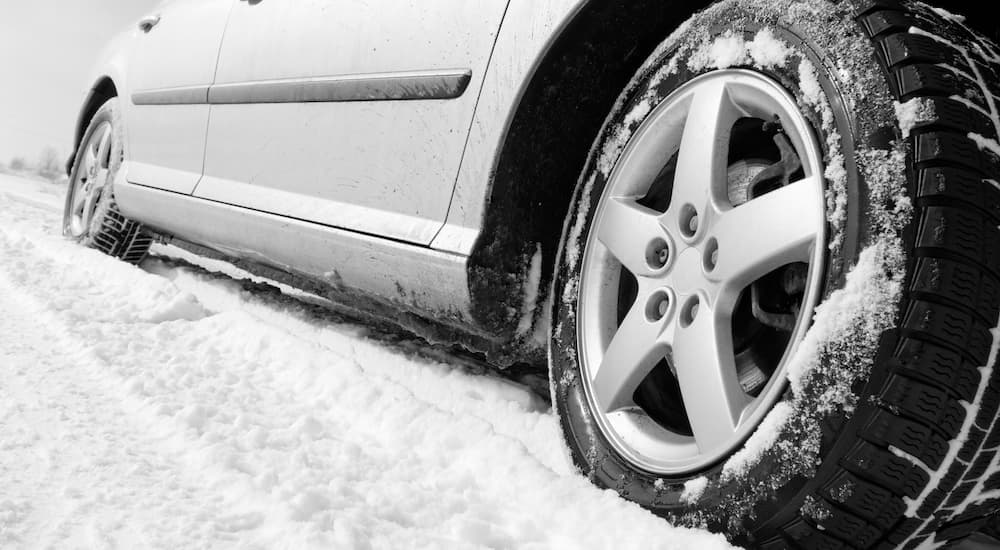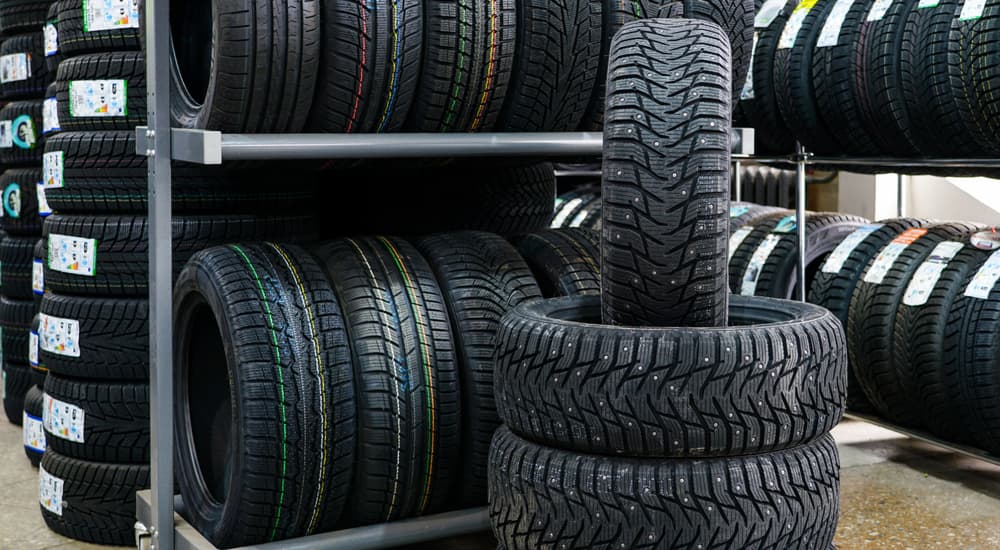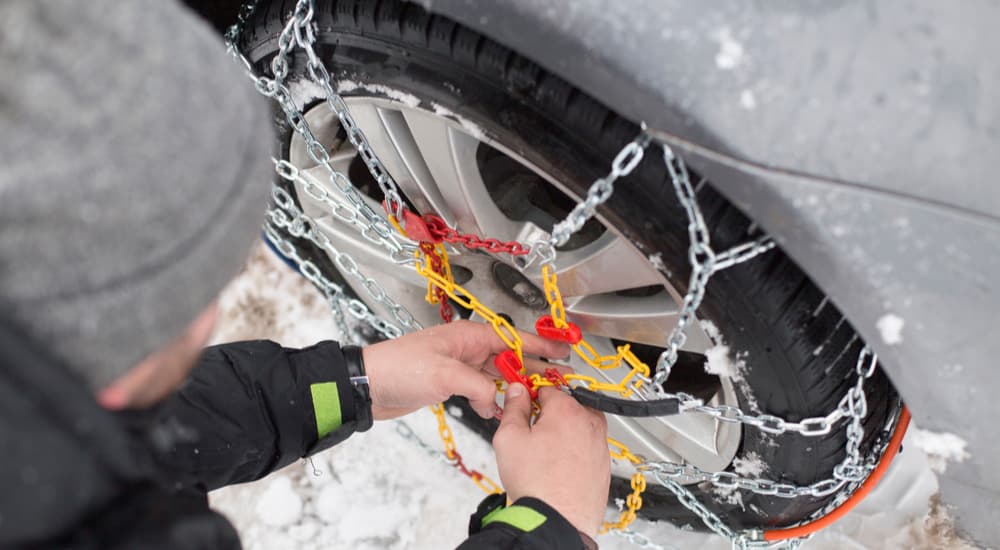Winter tires should be pretty straightforward, and they are in a lot of situations, but they can also present some complications and confusion. Whether you’re trying to figure out if the tires on your vehicle will work for snowy months or you’re looking at a local ad for some winter tires for sale, the choices you make can have a significant impact on your driving experience. No one is born knowing about proper tire care, or general automotive information for that matter, so it’s easy to make a mistake simply because no one ever explained something to you.
The good news, however, is that I’m here to help provide you with this information in a way that’s easy to understand. Having proper tires on your vehicle is essential to your safety on the road, and for many of us, that means using winter tires when the weather gets cold. However, it’s about more than snow and ice, as winter tires can help keep you in control even when the road is dry. Of course, I should note that this is not a buyer’s guide (that’s a whole other thing to research); instead, this will simply make sure you know what you’re looking at as you start shopping.
Winter Tires vs. All-Season Tires
One of the main reasons some people fail to utilize winter tires when they absolutely should is due to confusion about what “all-season” really means when it comes to tires. It’s understandable. Devoid of context, if someone presented me with something called “all-season tires,” I’d reasonably assume they’re meant to be used in all seasons. And if I lived in sunny California or Las Vegas, I’d pretty much be right. But if I lived in a place that gets cold, specifically colder than 46 degrees for weeks at a time, then I’d be very wrong.
If you take away only one thing from reading this–though I hope you’ll get more from it–it should be this: tires are designed to be soft. Sure, if you grab the tires on your car, they feel pretty firm. But in reality, their rubber is relatively soft and pliable, especially when it warms up due to friction from the road while you’re driving. As you drive, the rubber can squish and stretch slightly, deforming to make greater contact with the road, providing you with improved traction and control as you steer. This is by design, and it’s why modern tires are incredibly safe and responsive.
But here’s the catch: the rubber in your tires can only remain soft and pliable like that at certain temperatures. Warm and moderate weather is perfect for all-season tires, but once it gets particularly cold, the rubber becomes more firm and brittle. At that point, it will no longer hug the road the way you’re used to, and you get reduced traction, less responsiveness, and inferior control. While winter tires can help with snow and ice, they excel in all freezing conditions because their unique rubber compound is engineered to remain soft and pliable rather than brittle when the mercury drops.
When to Use Winter Tires
Did you notice that number I mentioned above? Feel free to scroll back up if you missed it, or don’t because I’ve got you covered: 46 degrees Fahrenheit is the magic number for winter tires. If you live somewhere that doesn’t get below 46 degrees on average, or it only happens a few times each year, then you’re fine with all-season tires. Enjoy!
But if you’re like me, and you spend several months with the temperature well below that point on average–colder at night and occasionally warmer during the day, but averaging 46 degrees or less overall-–then you need to switch to winter tires. The exact timing of this depends on where you live and when the weather changes. A general rule that many people use is switching to winter tires a week or two before Thanksgiving, then swapping back to summer or all-season tires right around tax day (essentially mid-November through mid-April).
You’ve probably noticed that’s only about six months, which is common for many of us here in the US. This is why a good set of winter tires can last you quite a few years because you’re only using them for half the year, and it’s during a season when you probably do the least driving. Following this rule and going off the temperature will also help ensure you have your winter tires on before any heavy snow, slush, or ice becomes an issue on the road. Speaking of snow…
Winter Tires vs. Snow Tires
Essentially, the terms “winter tires” and “snow tires” are used interchangeably; most people mean the same thing by them. They’re tires designed for use in cold temperatures. Compared to all-season tires, they have large grooves between the tread with irregular shapes to them and sharp edges to the tread blocks. This unique pattern cuts through snow and slush so that it can be scooped up by the deep grooves and shoveled away from the tire, allowing the tread to make better contact with the road. So if you hear some people talking about snow tires and others mentioning winter tires, they’re referring to the same things.
What About Tire Chains?
Tire chains are an entirely separate issue. You can’t just slap chains onto your all-season tires and be good for the next six months (seriously, please don’t do that). Most cities and states have laws regarding how and when you can use chains on your tires because they’re notoriously hard on roads. You need to know if they’re legal to use where you live.
Beyond that, tire chains are most effective when roads are especially treacherous due to a lot of ice and snow. Using them on dry roads or the highway can damage your chains and tires, and you also get terrible traction when using them in dry conditions. The best approach is to switch to winter tires when the time is right and have chains to use in an emergency if you live somewhere that can get serious amounts of snow (assuming it’s legal).
Studded Winter Tires
Unlike chains, studs are a feature found on some winter tires. Winter tires without studs are perfect for roads with a lot of slush and snow; studded tires provide superior traction if you deal with a lot of densely packed snow and ice. But what are they?
Studded tires are just what they sound like: they have metal studs built into their tread, placed there during manufacturing. The studs break up ice and packed snow but can also damage dry roads. Again, make sure studded winter tires are legal in your area or wherever you’re driving, and consider whether you deal with road conditions that justify them.
Can I Buy Used Winter Tires?
Can you? I suppose. Should you? Absolutely not! Winter tires are essential to maintaining proper control over your vehicle in cold weather, especially when snow, slush, and ice are on the road. The last thing you want to do is trust a set of tires that someone else has already used. You never truly know how or how much they used them. There’s no amount of money worth saving if it means putting you, your loved ones, and everyone else on the road at risk due to old, worn winter tires.
It’s worth paying a bit more to get new winter tires and use them for several years until they wear down, then replace them. Also, you need to put winter tires on all four wheels to ensure you stay in control and have proper traction. Trying to cut costs on old winter tires can result in a much more expensive bill after a collision, not to mention far worse consequences. When the temperature drops, get a good set of winter tires and don’t forget to slow down when the weather’s bad. We all share the same roads, so let’s take care of each other by being responsible drivers.






